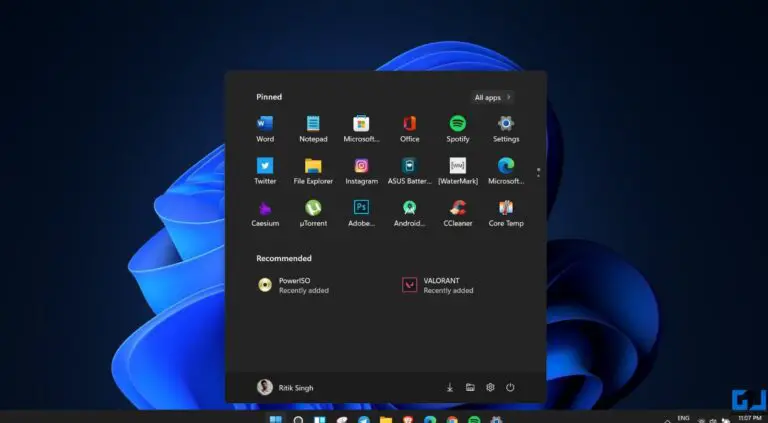Compare Intel X99 Z97 H97 Z87 H87 H81 Q87 Q85 B85 Chipset
When putting together a PC or looking for information on optimal performance on a particular configuration, it is essential to fully understand the function of the chipset and the value of selecting one model over another.
In this article, we display a visual comparison of the different models.
Be aware that chipsets evolve, new models appear regularly, we will try to update the information accordingly, however, there may be a lag. Go to the forum if you have any doubts.
The Chipset
A chipset is a electronic chipset allowing communication between the different elements of a motherboard including the processor.
Depending on the model, you therefore understand that it will support more or less features; for example the Z97 chipset supports 4th and 5th generation processors such as the following:
- the i7 5960X Extreme Edition being part of the fourth generation - Haswell processor
Series processors Broadwell who succeed Haswell should soon be revealed by Intel.
Take the example of diagrams including 2 chipsets from Intel, an old model: the H61 which dates from 2011 and Z97 released in February 2014.
The difference is significant even if the principle remains the same, we find the respective support for the types of processors and also the bandwidths between very distinct elements.
The Z97 follows the logic of evolving technologies with compatibility with PCIe 3.0, DDR3 / 3L memory, SATA 6Gb / s ports, USB 3.0 ports. As for the X99, the new Intel chipset intended for gamers and demanding users, it allows the management of an 8-core processor such as the latest i7 on LGA 2011 (socket), it also allows even more efficient multi-task management and as we can see it on the diagram above, the support of the DDR4 memory is topical.
The comparative
To reconcile the types of chipsets, we need to distinguish their use, some are intended for high performance PCs, others for a large audience or even for servers.
Classic desktops
Most PCs are equipped with the following chipsets, the specifics of which are as follows:
| Description | Q65 | B65 | Q67 | P67 | H67 | H81 | H77 | H87 | H97 |
|---|---|---|---|---|---|---|---|---|---|
| Processor support | Sandy bridge - LGA 1155 | Haswell - Socket LGA 1150 | Sandy & Ivy bridge - LGA 1155 | Haswell - Socket LGA 1150 | Haswell & Broadwell - Socket LGA 1150 | ||||
| Code name | cougar stitch | lynx point | Panther Point | lynx point | lynx point | ||||
| Release date | 1st quarter 2011 | 3rd quarter 2013 | 2rd quarter 2012 | 2rd quarter 2013 | 2rd quarter 2014 | ||||
| Integrated graphics | Yes | No | Yes | No | Graphics Processor | Graphics Processor | Graphics Processor | ||
| Supported displays | 2 | 2 | 2 | 2 | 3 | 3 | |||
| Memory support | DDR3 1333 MHz | DDR3 1600 MHz | DDR3 / 3L 1600 MHz | DDR3 / 3L 1600 MHz | |||||
| RST* | RST2 | Yes | Yes | Yes | Yes | Yes | Yes | ||
| Intel Smart Response Technology | Yes | Yes | Yes | ||||||
| Small Business Advantage | No | Yes | Yes | ||||||
| Support USB in total (USB 3.0) | 14 | 12 | 14 | 14 | 14 | 10 (2) | 14 (4) | 14 (6) | 14 (6) |
| SATA ports (6Gb / s) | 6 (2) | 6 (6) | 6 (6) | 4 (2) | 6 (2) | 6 (6) | 6 (6) | ||
| PCIe 2.0 | 8 | 8 | 8 | 6 | 8 | 8 | 8 | ||
| PCIe 3.0 | 0 | 0 | 0 | 0 | 0 | 0 | Yes | Yes | |
| Memory DIMMs per channel | 2 | 2 | 2 | 2 | 2 | 1 | 1 | 2 | 2 |
| Anti-Theft Technology | No | No | Yes | No | No | Yes | Yes | Yes | |
| Intel vPro technology | No | No | Yes | No | No | No | No | ||
| overclocking | No | No | No | Yes | not | No | No | No | No |
Rapid Storage Technology (RST) corresponds to better performance for SSDs and cache memory usage in them (Smart Response Technology - SRT).
For laptops, some particularities are restricted, but basically, we use the same characteristics, they are often more economical in terms of energy consumption (HM76, HM75, UM67…).
Generally, in order to identify them, we add M after the first letter. Example: QM87 or HM87. For more information, we invite you to visit the Intel website.
PCs for businesses
| Q75 | Q77 | B85 | Q85 | Q87 | |
|---|---|---|---|---|---|
| Processor support | Ivy bridge - LGA 1155 | Haswell - Socket LGA 1150 | |||
| Release date | 2rd quarter 2013 | ||||
| Graphics support | graphics on processor | ||||
| Memory support | DDR3 1600MHz | DDR3 / 3L 1600MHz | |||
| Tiny lake | |||||
| RST | Yes | Yes | No | Yes | |
| Intel Smart Response Technology | Yes | Yes | Yes | No | Yes |
| Small Business Advantage | Yes | Yes | |||
| Support USB in total (USB 3.0) | 14 (4) | 12 (4) | 14 (4) | ||
| SATA ports (6Gb / s) | 6 (6) | 6 (4) | 6 (6) | ||
| PCIe 2.0 | 8 | ||||
| PCIe 3.0 | Yes | ||||
| DIMM memory per channel | |||||
| Intel vPro technology | |||||
| Anti-Theft Technology | |||||
| overclocking | Yes | Yes | No | No | No |
Powerful PCs
| Z77 | Z87 | Z97 | X99 | |
|---|---|---|---|---|
| Processor support | Ivy bridge - LGA 1155 | Haswell - Socket LGA 1150 | Haswell & Broadwell - Socket LGA 1150 | Intel Core i7 LGA 2011-v3 |
| Release date | 2rd quarter 2012 | 2rd quarter 2013 | 2rd quarter 2014 | |
| Graphics support | graphics processor | |||
| Memory support | DDR3 1600 MHz | DDR3 / 3L 1600 MHz | DDR4 2133 MHz | |
| Tiny lake | ||||
| RST | Yes | Yes | Yes | |
| Intel Smart Response Technology | Yes | Yes | Yes | Yes |
| Small Business Advantage | ||||
| Support USB in total (USB 3.0) | 14 (6) | |||
| SATA ports (6Gb / s) | 6 (6) | 10 (10) | ||
| PCIe 2.0 | 8 | |||
| PCIe 3.0 | 1 × 16 2 × 8 1 × 8 and 2 × 4 | 1 × 16 2 × 8 1 × 8 and 2 × 4 | ||
| DIMM memory per channel | 2 | 2 | 2 | 4 |
| Intel vPro technology | ||||
| Anti-Theft Technology | ||||
| overclocking | Yes | Yes | Yes | Yes |
When researching motherboards, regardless of the brand (Asus, Gigabyte, MSI, ASRock, etc.), you can first refer to the integrated chipset and then to the various peculiarities specific to assembled motherboards.
We will update these comparison tables regularly.





